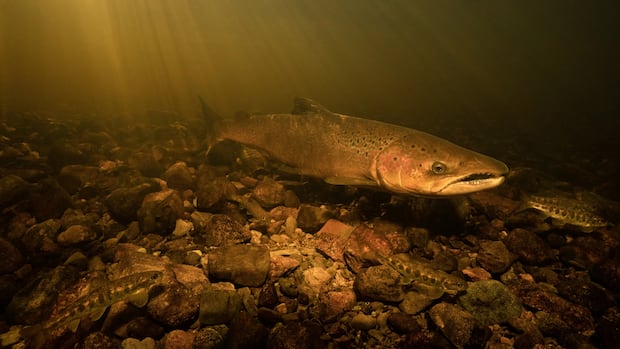Concerns are rising among conservationists over the extended drought in Nova Scotia potentially causing lasting damage to salmon populations. As Atlantic salmon return to their birth rivers in search of ideal spawning locations during October and November, the critically low water levels are jeopardizing this crucial stage of their lifecycle.
Amy Weston, the managing director of the Nova Scotia Salmon Association, expressed her worries about the survival of the current salmon generation. Salmon are selective in choosing nest sites, known as redds, requiring specific water temperatures and flow rates. The ongoing drought has disrupted these conditions, impacting the fish’s ability to spawn successfully.
The preference of salmon for cold, oxygen-rich water makes them vulnerable in warmer conditions with reduced oxygen levels. Additionally, low water levels limit their habitat and movement, increasing their susceptibility to predators. Although recent rainfall has partially replenished key salmon spawning watersheds, the persistent drought raises concerns for potential problems in the upcoming winter.
The province’s fish were already under stress due to low water levels and a significant rise in water temperatures. The St. Marys River, a vital salmon river in Nova Scotia, has been severely affected by the drought, with feeder brooks drying up completely, leaving small trout and salmon parr vulnerable in shrinking warm water pools.
Scott Beaver, president of the St. Mary’s River Association, highlighted the challenges faced by fish during the drought, noting the risks to the 2025 spawning season. However, late October rains have provided some relief and optimism for those working to safeguard the species’ survival.
Both Beaver and Weston emphasized the need for long-term solutions to restore natural buffers like riparian forests to provide shade and maintain cool river temperatures. With the increasing frequency of extreme weather due to climate change, communities must prioritize the preservation of fish habitats to ensure resilience.
In conclusion, efforts to enhance river resilience and habitat sustainability are crucial in mitigating the impact of climate change on fish populations. The collaboration of communities is vital in safeguarding the delicate balance of aquatic ecosystems for both fish and people.



